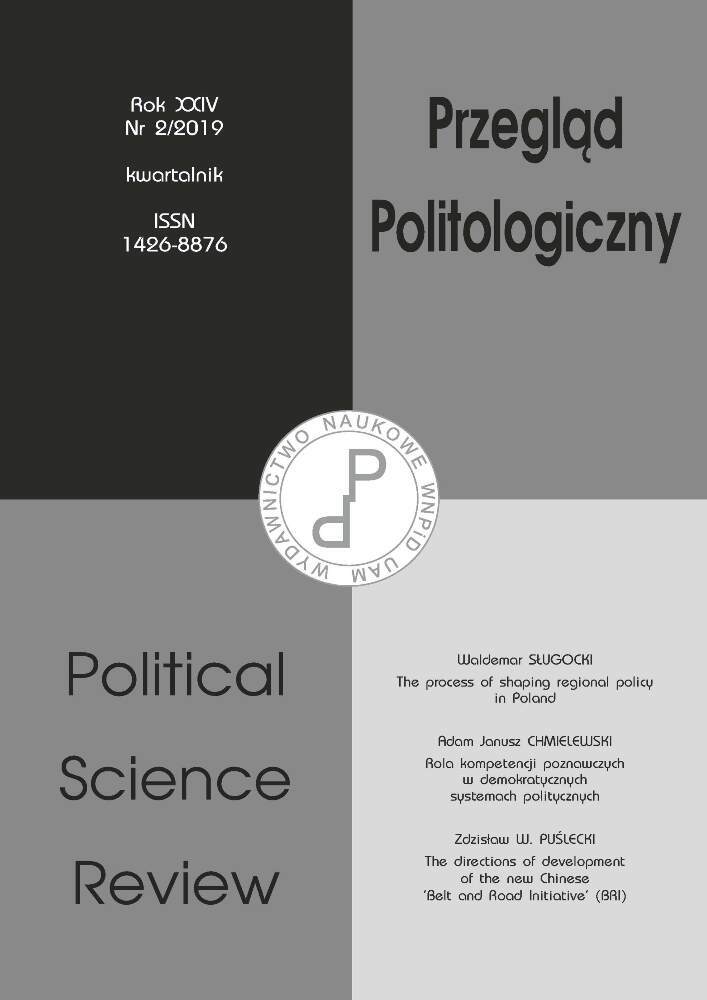Abstrakt
Szlak jedwabny od czasów starożytnych do wczesnego średniowiecza był głównym szlakiem handlowym łączącym Chiny z Europą i Bliskim Wschodem. Chiny zapowiedziały w roku 2013 rewitalizację tego szlaku dla intensywnego wsparcia swojej gospodarki. Zamierzają one przeznaczyć ok. 113 miliardów euro na infrastrukturę nowych tras handlowych do Europy, Azji i Afryki. Pojawiają się jednak obawy, że Chiny będą chciały w ten sposób rozszerzyć przede wszystkim swój wpływ na gospodarkę światową. Podkreśla się, że nikt nie chce Chinom zabronić budowy infrastruktury, lecz chodzi raczej o współpracę, która byłaby ekonomicznym sukcesem dla wszystkich stron. Z tego względu plany Australii, Stanów Zjednoczonych, Indii i Japonii w kierunku zachowania określonej równowagi, należy postrzegać raczej jako alternatywę niż jako konkurencję do nowego jedwabnego szlaku.
Bibliografia
Bagwell K., Staiger R. W. (1999), Domestic Policies, National Sovereignty and International Economic Institutions, “NBER Working Papers”, 7293, National Bureau of Economic Research, Inc.
Barreau J. (ed.) (1990), L’Etat enterpreneur. Nationalisation, gestion du secteur public concourrentiel, construction européenne, Paris.
Bathelt H. (2003), Growth regimes in spatial perspective 1: innovation, institutions and social systems, “Progress in Human Geography”, 27 (6), pp. 789–804.
Besha P. (2013), National, Regional and Sectoral Innovation Systems in China: General Overview and Case Studies of Renewable Energy and Space Technology Sectors, ProQuest LLC. 789 East Eisenhower Parkway P.O. Box 1346 Ann Arbor, MI 48106 – 1346.
Cao C., Suttmeier R. P., Simon D. F. (2006), China’s 15-year science and technology plan, “Physics Today”, December, pp. 38–43.
Crookes P. I. (2013), Resetting EU–China relations from a values-based to an interests-based engagement, Contemporary China Studies Programme, School of Interdisciplinary Area Studies, University of Oxford, 74 Woodstock Road, Oxford OX2 6HP, UK.
Doherty A. N., Lu F. V. (2013), China: Spectacular Growth and Inequality, “Journal of Business and Economics”, March, vol. 4, no. 3, pp. 195–201.
Downs E. S. (2008), China’s “New” Energy Administration, “China Business Review”, November–December.
Hou M. I., Zhang D. W. (2012), Lessons from photovoltaic policies in China for future development, “Energy Policy” 51, pp. 38–45.
https://www.aiib.org/en/projects/approved/index.htm, June 9, 2018.
https://www.cfr.org/backgrounder/building-new-silk-road, June 6, 2018.
http://www.chinadiscovery.com/china-silk-road-tours/maps.html, June 9, 2018.
http://www.chinainvestmentresearch.org/press/massive-chinese-lending-directed-to-silk-road/, June 9, 2018.
http://foreignpolicy.com/2015/05/07/interactive-map-follow-the-roads-railways-and-pipelines-on-chinas-new-silk-road/, June 9, 2018.
http://www.hellenicshippingnews.com/commodities-crash-boosts-chinas-new-silk-road/, June 9, 2018.
https://www.researchgate.net/publication/312533416_One_Belt_One_Road_Visions_and_Challenges_of_China’s_Geoeconomic_Strategy, June 9, 2018.
http://www.silkroutes.net/orient/mapssilkroutestrade.htm, June 9, 2018.
http://www.silkroutes.net/OBOR/9MapWallStreetJounal.jpg, June 9, 2018.
http://thediplomat.com/2015/09/chinas-silk-road-initiative-is-at-risk-of-failure/, June 9, 2018.
https://www.weforum.org/agenda/2015/11/europe-china-new-silk-road, June 7, 2018.
Jones K. (2015), Reconstructing the World Trade Organization for 21st Century, An Institutional Approach, Oxford University Press, Oxford–New York.
Kuijs L. (2009), China through 2020 – A microeconomic scenario, “World Bank Research Paper”, no. 9.
Heilmann S., Schmidt D. H. (2014), China’s Foreign Political and Economic Relations. A Unconventional Global Power, Rowman&Littlefield, Lanham, Maryland, USA.
Pu X. (2018), One Belt, One Road: Visions and Challenges of China’s Geoeconomic Strategy, https://www.researchgate.net/publication/312533416_One_Belt_One_Road_Visions_and_Challenges_of_China’s_Geoeconomic_Strategy, June 9, 2018.
Xiaobo L. (2009), China’s regional innovation capacity in transition: An empirical approach, “Research Policy”, vol. 38, Issue 2, pp. 338–357.

